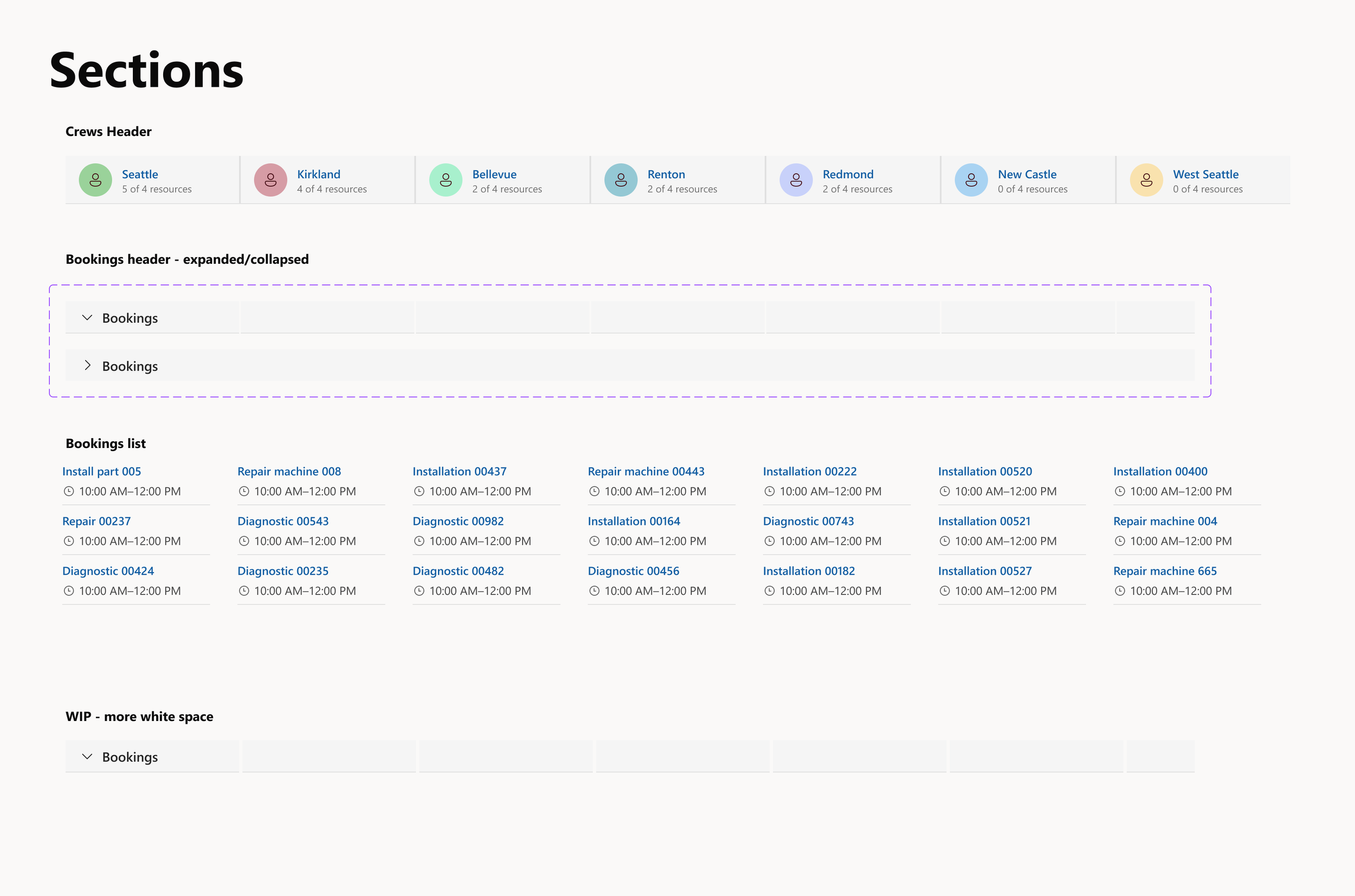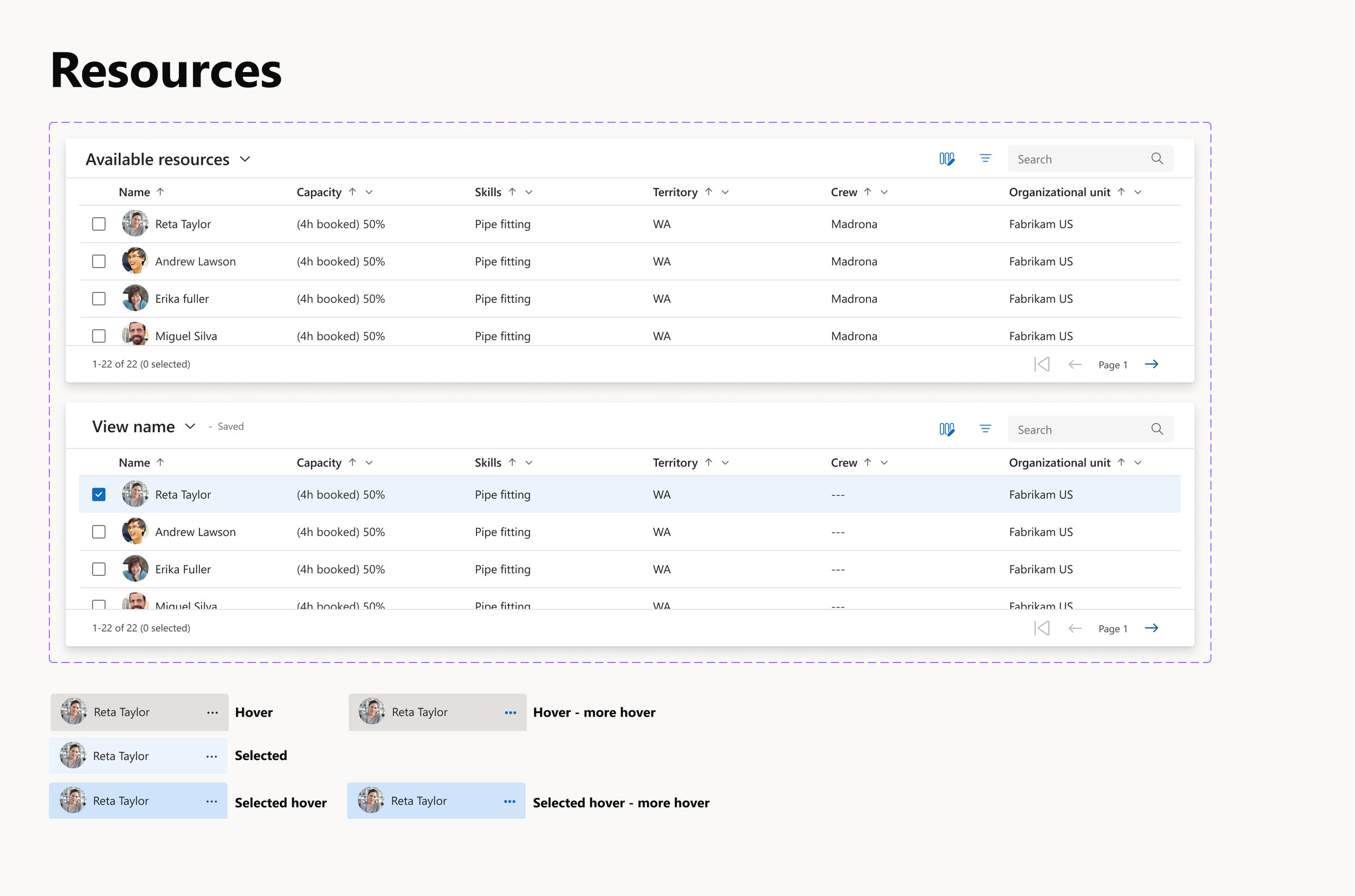Crew Allocation - A new, production‑shipped experience in Dynamics 365 Field Service that streamlines daily “morning shuffle” crew changes. Launched June 2024
Context
Product: Dynamics 365 Field Service (Crew Management)
My role: End‑to‑end product design (flows, interaction, UI patterns), spec authoring, reviews with PM/Eng, and bug‑bash triage / participation.
Problem
Schedulers needed a way to make same‑day crew changes quickly without harming data integrity or performance. The legacy tools were slow and made cross‑crew moves cumbersome at scale.
Goals
Enable quick, safe single‑day re‑assignments
Make “who’s on which crew” legible at a glance
Guard performance under heavy drag‑and‑drop activity.
Impact highlights
↓ 42% average time to reassign a crew member (from 2.4 min → 1.4 min per change)
↓ 35% save‑error rate during peak hours, thanks to guardrails like save‑before‑switching‑day
↑ 28% faster multi‑crew adjustments in a single session
↑ 22% scheduler confidence (measured via post‑task CSAT and bug‑bash feedback)
15‑member cap maintained sub‑200ms drag‑and‑drop responsiveness under load
Key Design Decisions
At‑a‑glance staffing: Displayed “X of Y resources” to show optimal crew size without blocking extra assignments.
Drag‑and‑drop interaction: Prioritized a simple, horizontal drag pattern for quick reassignment across crews.
Save before switching days: Added a guardrail to prevent accidental data loss during multi‑step edits.
Performance constraint: Capped crews at 15 resources to keep interactions responsive and predictable.
Context preservation: Kept crew details visible during edits to reduce cognitive load for schedulers.
I designed the foundational building blocks, atoms and molecules, that power the Crew Allocation experience.
Every button, card, and interaction pattern was crafted for clarity and reuse, ensuring consistency across the product. By partnering closely with engineering, I delivered tokenized components and detailed specs that made implementation predictable and scalable. This approach not only accelerated development but also created a shared design language that simplified future iterations.





The first wireframe pass focused on the essentials: how schedulers would view crews, move resources, and confirm changes without breaking context.
At this stage, fidelity was low by design, our priority was validating the core flow and information hierarchy before layering in visual polish or performance constraints.




